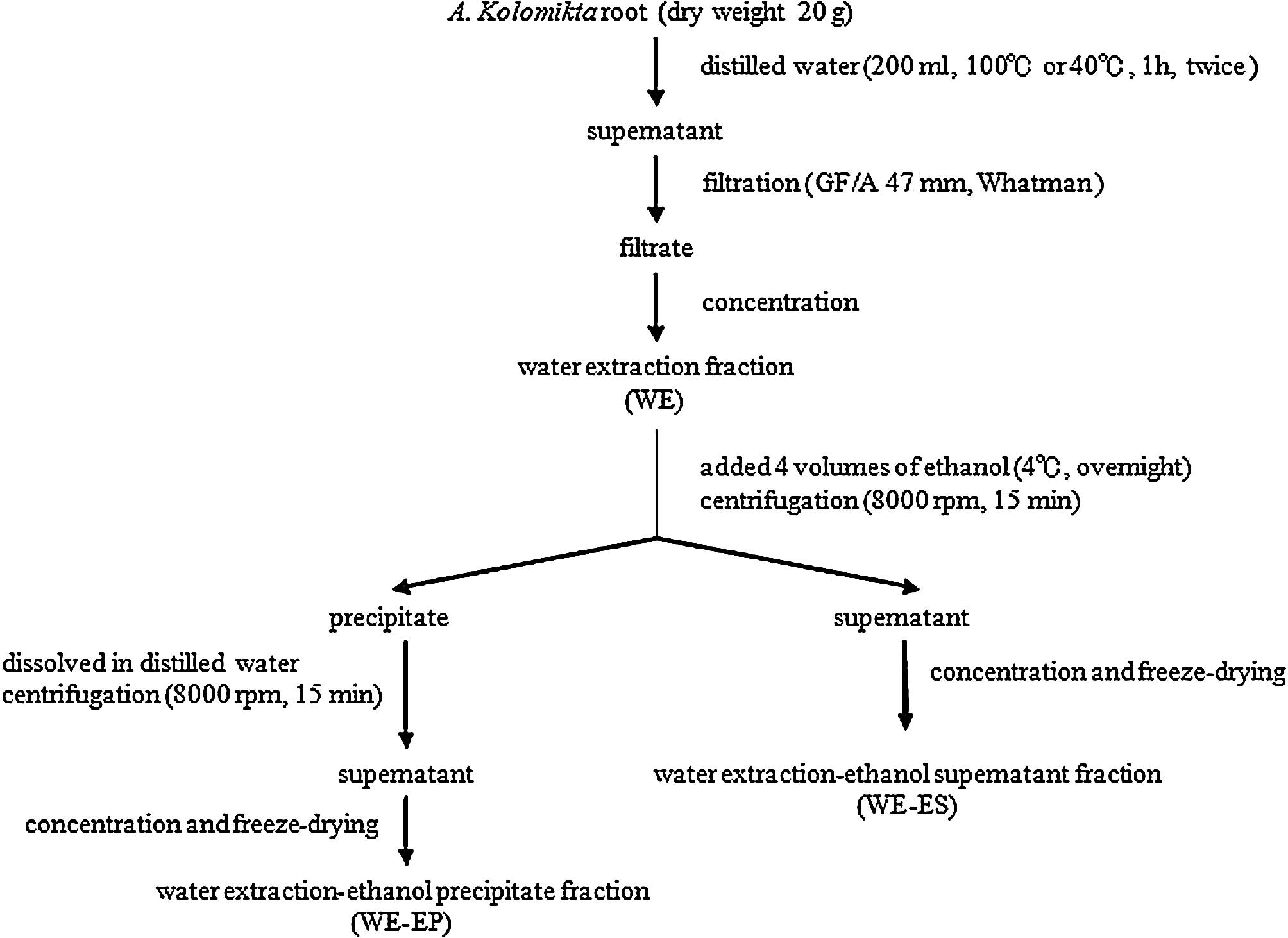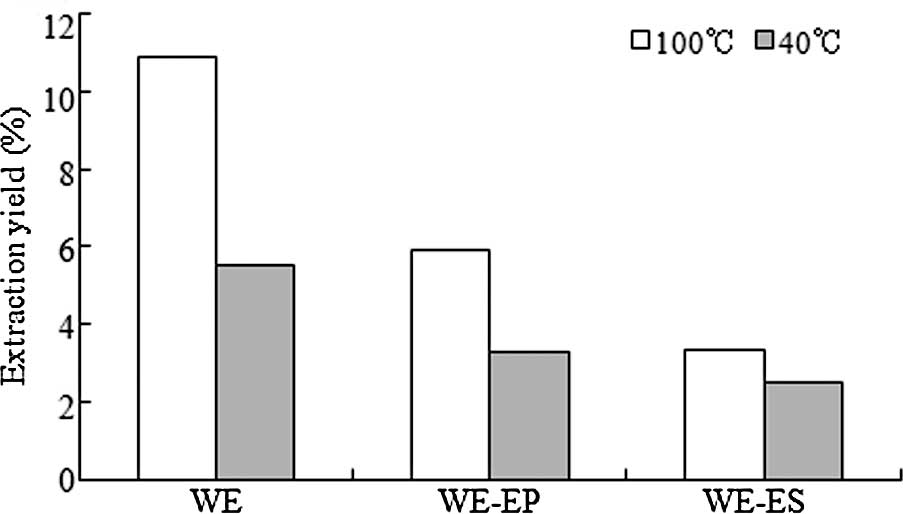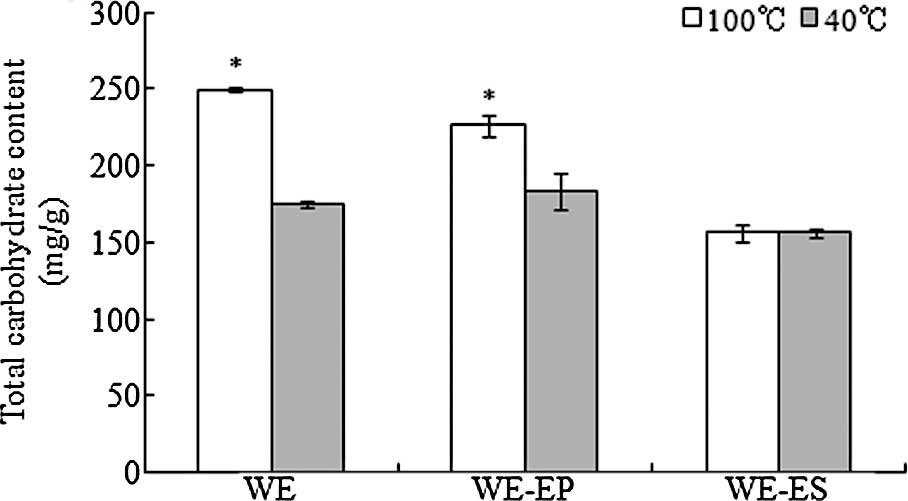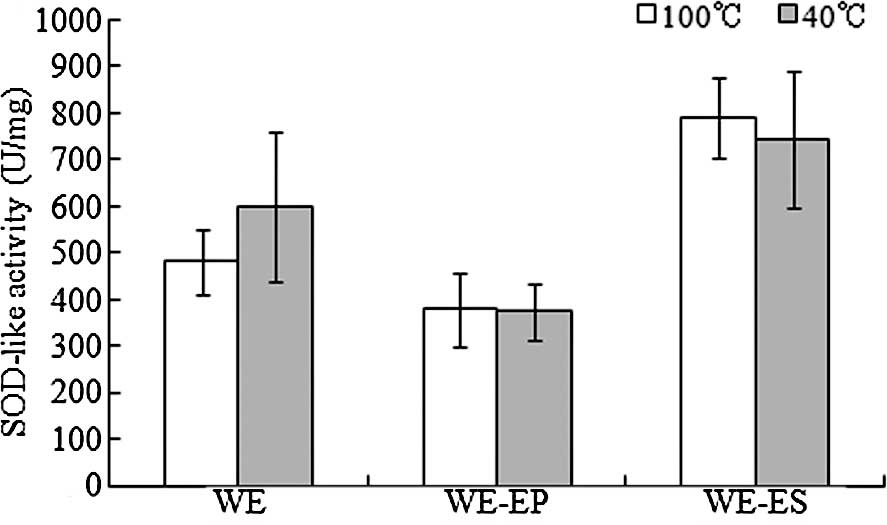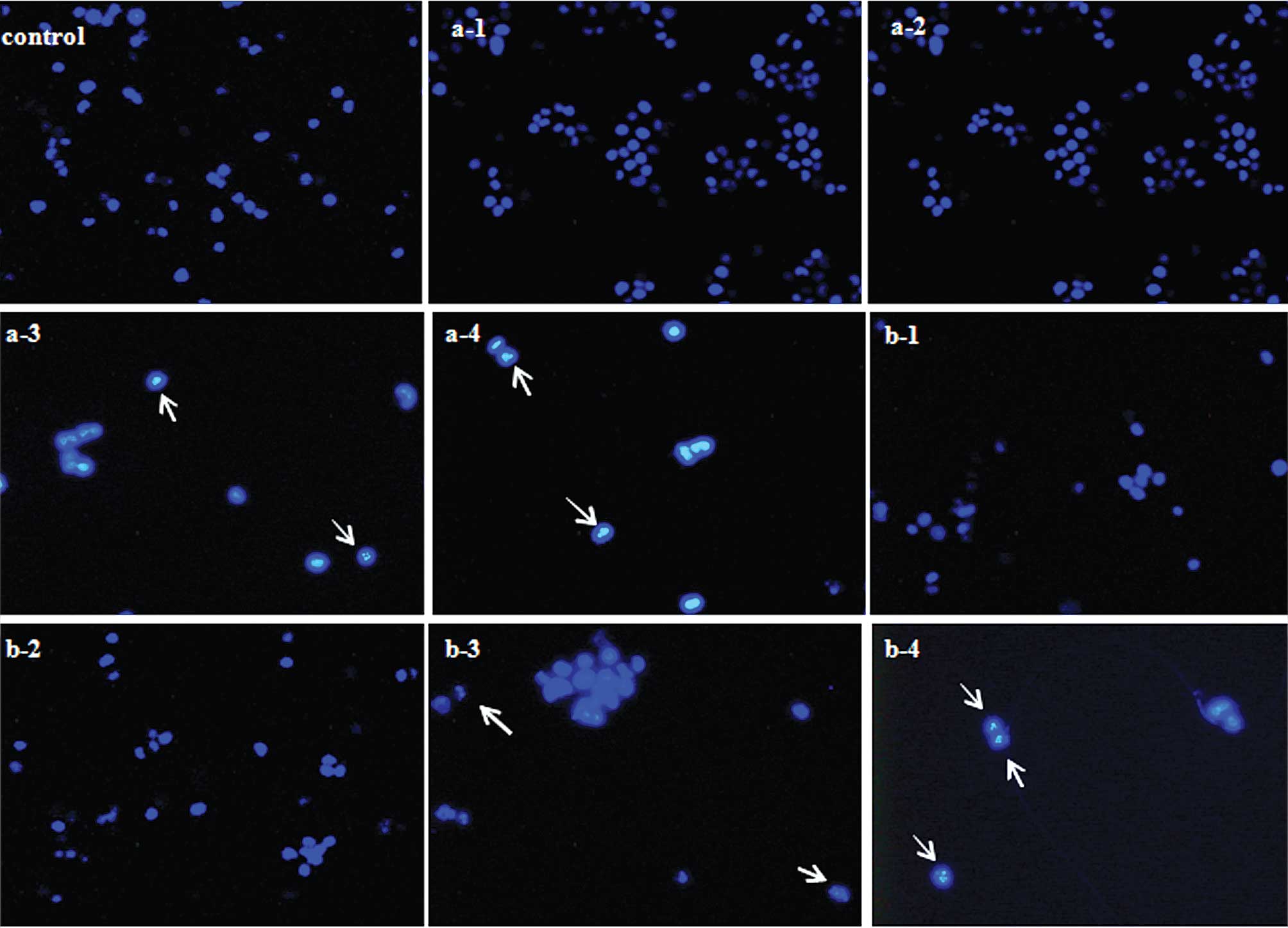|
1.
|
Moskovitz J, Yim MB and Chock PB: Free
radicals and disease. Arch Biochem Biophys. 397:354–359. 2002.
View Article : Google Scholar : PubMed/NCBI
|
|
2.
|
Sun J, Yao JY, Huang SX, Long X, Wang JB
and Garcia EG: Antioxidant activity of polyphenol and anthocyanin
extracts from fruits of Kadsura coccinea (Lem). Food Chem.
117:276–281. 2009. View Article : Google Scholar
|
|
3.
|
Mau JL, Lin HC and Song SF: Antioxidant
properties of several specialty mushrooms. Food Res Int.
35:519–526. 2002. View Article : Google Scholar
|
|
4.
|
Hu TJ, Wei XJ, Zhang X, Cheng FS, Shuai
XH, Zhang L and Kang L: Protective effect of Potentilla anserine
polysaccharide (PAP) on hydrogen peroxide induced apoptosis in
murine splenic lymphocytes. Carbohydr Polym. 79:356–361. 2010.
View Article : Google Scholar
|
|
5.
|
PJiménez J, Arranz S, Tabernero M,
Díaz-Rubio ME, Serrano J, Goñi I and Saura-Calixto F: Updated
methodology to determine antioxidant capacity in plant foods, oils
and beverages: Extraction, measurement and expression of results.
Food Res Int. 41:274–285. 2008.
|
|
6.
|
Hadi SM, Bhat SH, Azmi AS, Hanif S, Shamim
U and Ullah MF: Oxidative breakage of cellular DNA by plant
polyphenols: A putative mechanism for anticancer properties. Semin
Cancer Biol. 17:370–376. 2007. View Article : Google Scholar : PubMed/NCBI
|
|
7.
|
Du GR, Li MJ, Ma FW and Liang D:
Antioxidant capacity and the relationship with polyphenol and
Vitamin C in Actinidia fruits. Food Chem. 113:557–562. 2009.
View Article : Google Scholar
|
|
8.
|
Graham JG, Quinn ML, Fabricant DS and
Farnsworth NR: Plants used against cancer – an extension of the
work of Jonathan Hartwell. J Ethnopharmacol. 73:347–377. 2000.
|
|
9.
|
Xu HS, Yao L, Sun HX and Wu YW: Chemical
composition and antitumor activity of different polysaccharides
from the roots of Actinidia eriantha. Carbohydr Polym.
78:316–322. 2009. View Article : Google Scholar
|
|
10.
|
Xu HS, Wu YW, Xu SF, Sun HX, Chen FY and
Yao L: Antitumor and immunomodulatory activity of polysaccharides
from the roots of Actinidia eriantha. J Ethnopharmacol.
125:310–317. 2009. View Article : Google Scholar : PubMed/NCBI
|
|
11.
|
Mauro M: Estimation of total carbohydrate
amount in environmental samples by the phenol-sulphuric acid method
assisted by multivariate calibration. Chemom Intell Lab Syst.
79:84–90. 2005. View Article : Google Scholar
|
|
12.
|
Rhee SJ, Cho SY, Kim KM, Cha DS and Park
HJ: A comparative study of analytical methods for alkali-soluble
β-glucan in medicinal mushroom, Chaga (Inonotus obliquus).
LWT-Food Sci Technol. 41:545–549. 2008.
|
|
13.
|
Nakajima Y, Sato Y and Konishi T:
Antioxidant small phenolic ingredients in Inonotus obliquus
(persoon) Pilat (Chaga). Chem Pharm Bull. 55:1222–1226. 2007.
View Article : Google Scholar : PubMed/NCBI
|
|
14.
|
Yang B, Wang JS, Zhao MM, Liu Y, Wang W
and Jiang YM: Identification of polysaccharides from pericarp
tissues of litchi (Litchi chinensis Sonn) fruit in relation
to their antioxidant activities. Carbohydr Res. 341:634–638. 2006.
View Article : Google Scholar : PubMed/NCBI
|
|
15.
|
Zhang M, Chen HX, Huang J, Li Z, Zhu CP
and Zhang SH: Effect of lycium barbarum polysaccharide on
human hepatoma QGY7703 cells: inhibition of proliferation and
induction of apoptosis. Life Sci. 76:2115–2124. 2005.
|
|
16.
|
Hu HH, Zhang ZY, Lei ZF, Yang YN and
Sugiura N: Comparative study of antioxidant activity and
antiproliferative effect of hot water and ethanol extracts from the
mushroom Inonotus obliquus. J Biosci Bioeng. 107:42–48.
2009. View Article : Google Scholar : PubMed/NCBI
|
|
17.
|
Bennani H, Drissi A, Giton F, Kheuang L,
Fiet J and Adlouni A: Antiproliferative effect of polyphenols and
sterols of virgin argan oil on human prostate cancer cell lines.
Cancer Detect Prev. 31:64–69. 2007. View Article : Google Scholar : PubMed/NCBI
|
|
18.
|
Wang ZJ and Luo DH: Antioxidant activities
of different fractions of polysaccharide purified from
Gynostemma pentaphyllum Makino. Carbohydr Polym. 68:54–58.
2007. View Article : Google Scholar
|
|
19.
|
Su XG, Duan J, Jiang YM, Shi J and Kakuda
Y: Effects of soaking conditions on the antioxidant potentials of
oolong tea. J Food Compos Anal. 19:348–353. 2006. View Article : Google Scholar
|
|
20.
|
Cai YZ, Luo Q, Sun M and Corke H:
Antioxidant activity and phenolic compounds of 112 traditional
Chinese medicinal plants associated with anticancer. Life Sci.
74:2157–2184. 2004. View Article : Google Scholar : PubMed/NCBI
|
|
21.
|
Sousa A, Ferreira ICFR, Barros L, Bento A
and Alberto J: Pereira effect of solvent and extraction
temperatures on the antioxidant potential of traditional stoned
table olives “alcaparras”. LWT-Food Sci Technol. 41:739–745.
2008.
|
|
22.
|
Kilani-Jaziri S, Neffati A, Limem I,
Boubaker J, Skandrani I, Sghair MB, Bouhlel I, Bhouri W, Mariotte
AM, Ghedira K, Franca MD and Chekir-Ghedira L: Relationship
correlation of antioxidant and antiproliferative capacity of
Cyperus rotundus products towards K562 erythroleukemia
cells. Chem-Biol Interact. 181:85–94. 2009. View Article : Google Scholar : PubMed/NCBI
|
|
23.
|
Zhao Y, Cao J, Ma H and Liu JW: Apoptosis
induced by tea polyphenols in HL-60 cells. Cancer Lett.
121:163–167. 1997. View Article : Google Scholar : PubMed/NCBI
|
|
24.
|
Han SB, Park SK, Ahn HJ, Yoon YD, Kim YH,
Lee JJ, Lee KH, Moon JS, Kim HC and Kim HM: Characterization of B
cell membrane receptors of polysaccharide isolated from the root of
Acanthopanax koreanum. Int Immunopharmacol. 3:683–691. 2003.
View Article : Google Scholar : PubMed/NCBI
|



